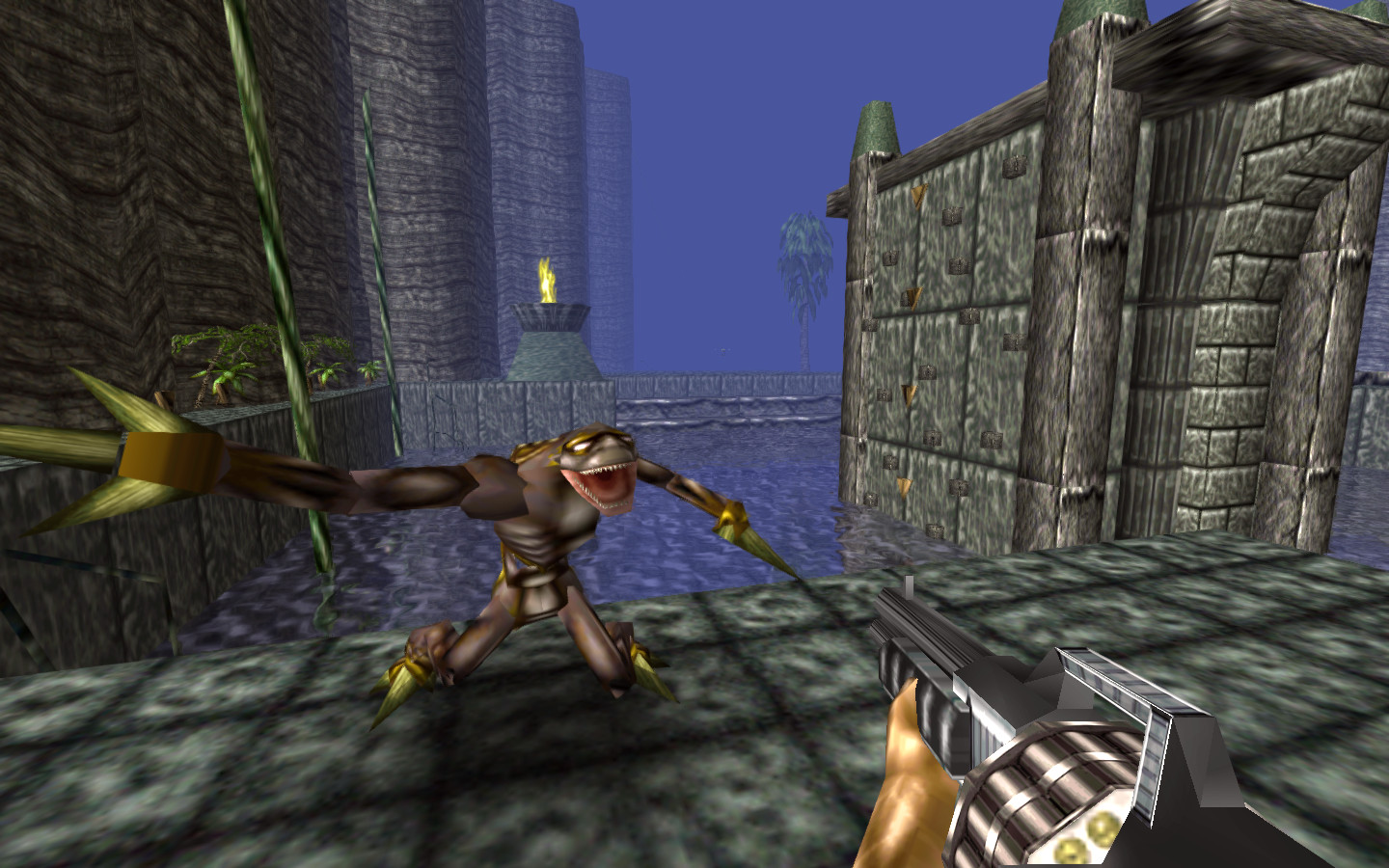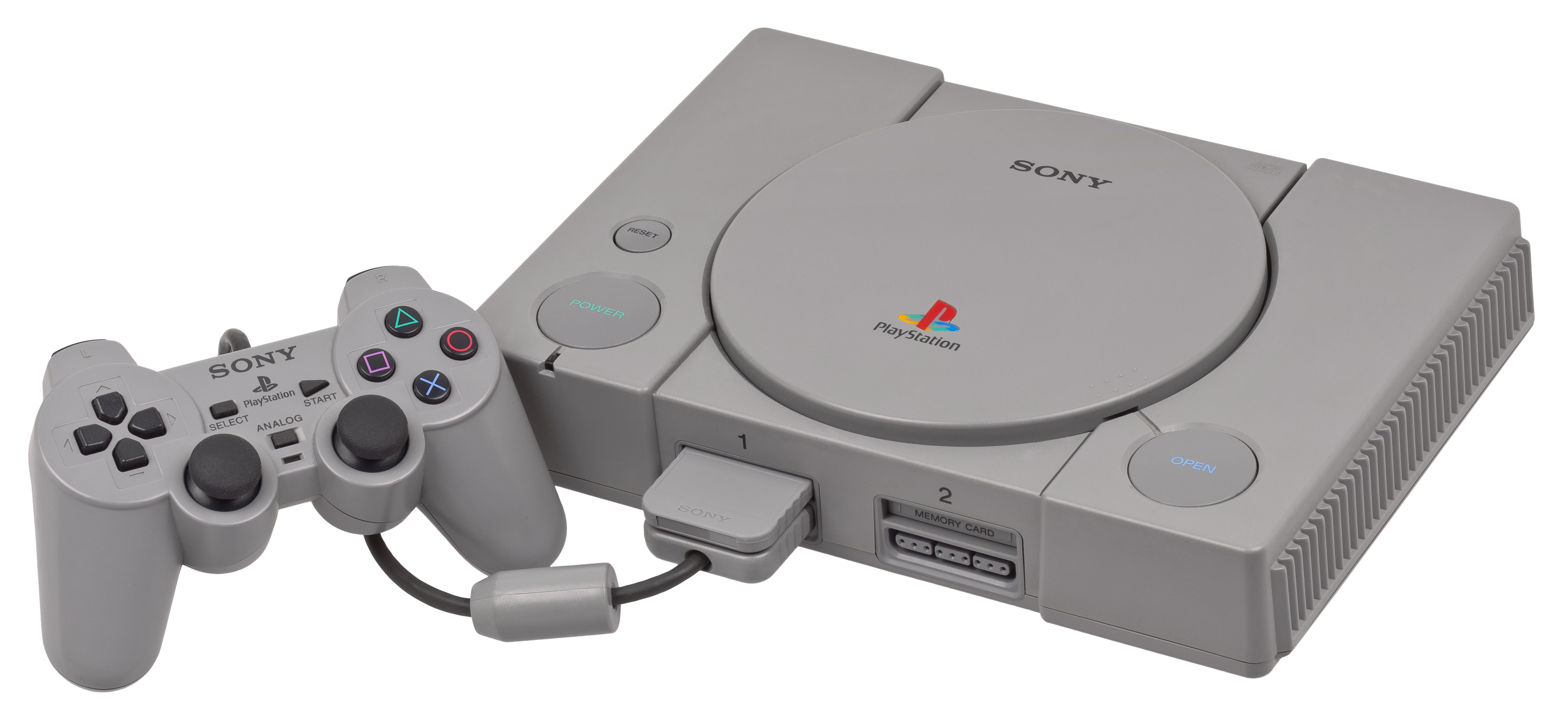64-bit, Nintendo 64 and Wave Race 64

64-bit
In 1996, Nintendo released the Nintendo 64. The console featured a graphics chip capable of executing advanced and sophisticated rendering techniques. Thanks to trilinear filtering, the textures looked smooth, especially compared with its competitors, Sega Saturn and Sony PlayStation, which produced more pixelated textures. The innovation that deserves a closer look is the handling of graphics by the console’s hardware. Previous computer graphics were based on software, and the development of dedicated 3D graphics hardware was a milestone for the evolution of graphics in video games that would shape the upcoming developments.
For our concerns, Nintendo 64 was an exceptional video console because it was launched with a video game that glorifies the machine’s technical capabilities by representing water. Wave Race 64 is a racing video game developed by Nintendo EAD and published by Nintendo in 1996. It is a follow-up of the previously mentioned 1992 Game Boy title Wave Race. The first video game that used the refreshing screen limitations of the Game Boy’s screen to emulate a sense of transparency and dynamics of water is this time taken into the realm of tridimensional graphics.
In Wave Race 64, the plane representing water renders a triangular mesh using various equations that dynamically undulate the plane, giving the impression of waves. At the same time, the ski jets would simulate buoyancy, making the experience of floating somewhat realistic for the player. This was the first game to accurately simulate the effects of waves while influencing the player’s movement.
The wave itself is constrained to the player’s surroundings, being rendered just a few meters away from the ski jet. There are two major different types of waves. The first one is a bass sine wave that, like a ripple, appears at regular intervals. The point of origin of this wave, however, seems to be anchored to the camera frustum. The ripples follow the camera and originate from the set position in space. Other wave patterns are linked to important positions, producing large waves at set intervals. The Nintendo developers defined a set of various rules and points for where the waves are generated.

As we saw in predecessors, Wave Race 64 takes advance of the pixelation to blend the tridimensional limitations with the aesthetics. The wave that just surrounds the ski jets blends with the larger flat surface that represents the entire body of water. While the waves are not generated by the ski jets, the developers made it look as though they are, by simulating a splash of water that is created by an Alpha texture.
The simulation of water is seen along with the collection of games for Nintendo 64. It can be seen on video games such as the tridimensional puzzle Wetrix created by Zed Two in 1997, where interactive ripples react after interacting with the other elements in the game.
![]()
As can
Texture filter 532 in this example can perform three types of filter operations: point sampling, box filtering, and bilinear interpolation. Point sampling selects the nearest texel to the screen pixel. In the special case where the screen pixel is always the center of four texels, the box filter can be used. In the case of the typical 3-D, arbitrarily rotated polygon, bilinear filtering is generally the best choice available. For hardware cost reduction, display processor texture filter unit 532 does not implement a true bilinear filter. Instead, it linearly interpolates the three nearest texels to produce the result pixels. This has a natural triangulation bias which is not noticeable in normal texture images but may be noticed in regular pattern images. This artifact can be eliminated by prefiltering the texture image with a wider filter.

As we saw in predecessors, Wave Race 64 takes advance of the pixelation to blend the tridimensional limitations with the aesthetics. The wave that just surrounds the ski jets blends with the larger flat surface that represents the entire body of water. While the waves are not generated by the ski jets, the developers made it look as though they are, by simulating a splash of water that is created by an Alpha texture.
The simulation of water is seen along with the collection of games for Nintendo 64. It can be seen on video games such as the tridimensional puzzle Wetrix created by Zed Two in 1997, where interactive ripples react after interacting with the other elements in the game.

As can
Texture filter 532 in this example can perform three types of filter operations: point sampling, box filtering, and bilinear interpolation. Point sampling selects the nearest texel to the screen pixel. In the special case where the screen pixel is always the center of four texels, the box filter can be used. In the case of the typical 3-D, arbitrarily rotated polygon, bilinear filtering is generally the best choice available. For hardware cost reduction, display processor texture filter unit 532 does not implement a true bilinear filter. Instead, it linearly interpolates the three nearest texels to produce the result pixels. This has a natural triangulation bias which is not noticeable in normal texture images but may be noticed in regular pattern images. This artifact can be eliminated by prefiltering the texture image with a wider filter.
Nintendo 64 is a different console and deserves a closer and independent look; however, in this paper, we will move forward after looking at Turok: Dinosaur Hunter. Its waters displayed a fixed wave pattern and utilized the bilinear filtering to render a sense of transparency and depth.
Sega’s response to Nintendo was the Saturn. It did not match its rival. However, it had two Video Display Processors, VDP1 and VDP2. The former was in charge of drawing all the sprites; that is, the two-dimensional objects, vectors, and tridimensional elements that did not require the application of textures. The latter chip was dedicated to drawing backgrounds and gathering the data from the Video Memory (VRAM) of the VDP1 and dumping it into the screen. From the Sega Saturn can be highlighted Virtua Fighter 3, developed by Sega AM2 in 1996; Panzer Dragoon, the role-playing Grandia, developed by Game Arts and published by ESP Software in 1999; and Sonic Jam, developed by Sonic Team and published by Sega for the Sega Saturn.
In 1994, Sony launched the original PlayStation in Japan. The video console has a list of good examples to review, such as the action-adventure video game Terracon, developed by Picture House and released in 2000. The game was able to render great bodies of water and waves, but it is the splashes that make Terracon a good example of water rendering. The water reacted to the player’s movement and created splashes almost simulating bump mapping.

Another notable game developed for the PlayStation was the original first-person shooter Unreal, developed by Epic Games and Digital Extremes in 1998. The game was powered by the Unreal Engine and featured a fluid system, along with a collision detection, colored lighting, and a rudimentary version of texture filtering that would later be a crucial element in tridimensional games. From the aim of looking at water representation, The Lost World: Jurassic Park, developed by DreamWorks Interactive and Appaloosa Interactive, published by Electronic Arts, and based on the film, presented a special way to display ripples in bodies of water.